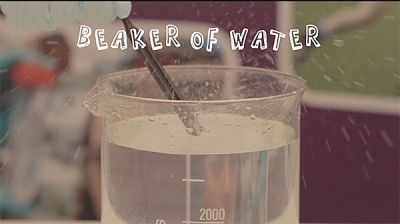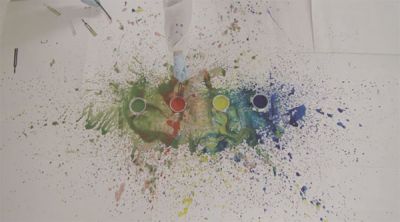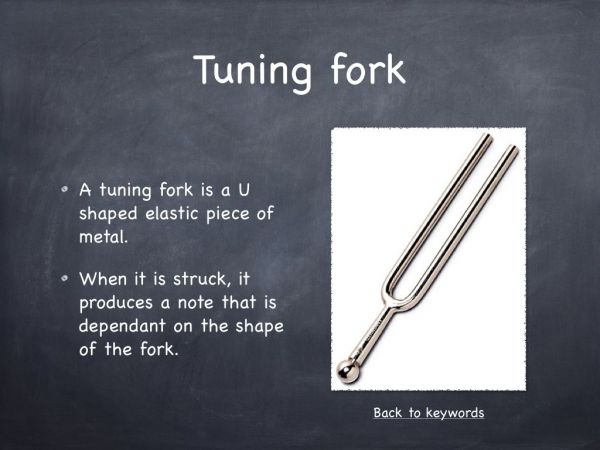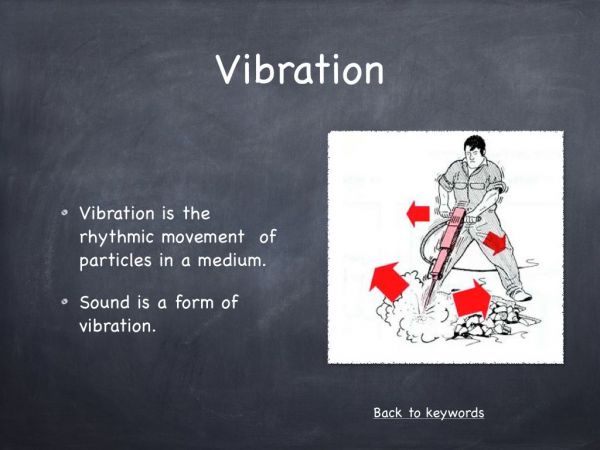Sound is a form of energy and sound is caused by vibrations. In this video, we examine the sound made by a tuning fork. If the tuning fork is struck, the vibrations created in the air produce a quiet sound and force.
Methodology
Materials
- Tuning Forks
- Beaker
- Gloss paint
- White spirits
Method
Putting the tuning forks into water lets us see the vibrations that generate sound. When the tuning fork is put into the water or paint, the vibrations (movement) of the legs of the fork will throw out the water.
With Water:
Hit the tuning fork of hard surface.
Carefully put tuning fork into a beaker of water.
Water splashes out of the beaker.
With Paint:
Mix white spirits to gloss pain to the ratio of about 10 to 1.
Place a few white sheets of paper under the beaker containing the paint mixture.
Hit the tuning fork of hard surface and put the tuning fork into paint.
Carefully put tuning fork into paint.
Paint splashes everywhere.
Tips
If you are going to use paint, make sure the paint is viscous/fluid enough that the vibrations are strong enough to throw off the paint.
*Precautions/Safety
Theory behind the hook
Sound waves are produced by vibrating objects. Whether it be the sound of a person’s voice, the sound of a piano, the sound of a trombone or the sound of a physics book slamming to the floor, the source of the sound is always a vibrating object. A tuning fork serves as a useful illustration of how a vibrating object can produce sound. The fork consists of a handle and two tines (legs). When the tuning fork hits a solid object, the tines (legs) begin to vibrate. The back and forth vibration of the tines produce disturbances of surrounding air molecules. In this video we use water and then pain to more easily demonstrate these vibrations. The back and forth vibration of the tines produce disturbances in the water and if the vibrations are strong enough the water splashes out of the beaker. The diagram below shows the plane of vibration of the tines and the sound that is then produced.
How this hook works
Many pupils will not have seen a tuning fork before, so it’s a good idea to show pupils the forks prior to this video. The forks produce sound, however, the force they create is surprisingly strong and this impressive force is what draws pupils into the video. The splashing water is the basic introduction and then the paint is used to show pupils how science can permeate throughout other subjects. Art and music were chosen as the main cross curricular links in a number of the science videos due to many people finding it difficult to connect these subjects to science in creative and interesting ways. The paint is a more complicated way of showing that sound is a force and will appeal to visual learners.
Questions & Answers
Lower Order
- In what other musical instruments do you directly vibrate a surface?
Drum - How is sound produced?
Vibrations - What is the speed of sound in air?
340 m/s
Higher Order
- In what material does air travel faster: Air, Water, Paint or Steel?
Steel because it the most dense. In order from fastest to slowest Steel – Paint – Water- Air - Where are sound vibrations used to break up material?
Ultrasonic Radiation is used to break up gall stones.









